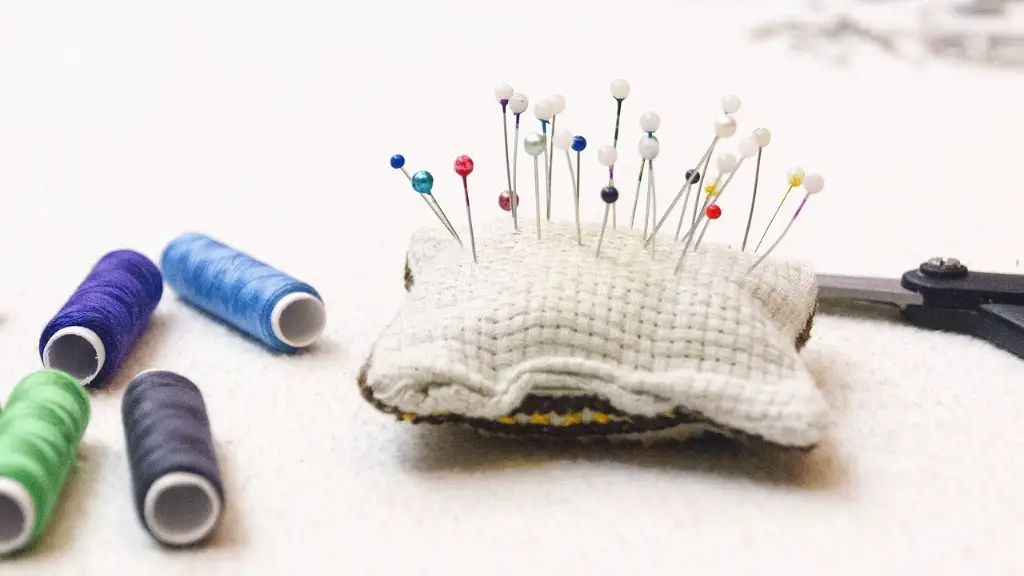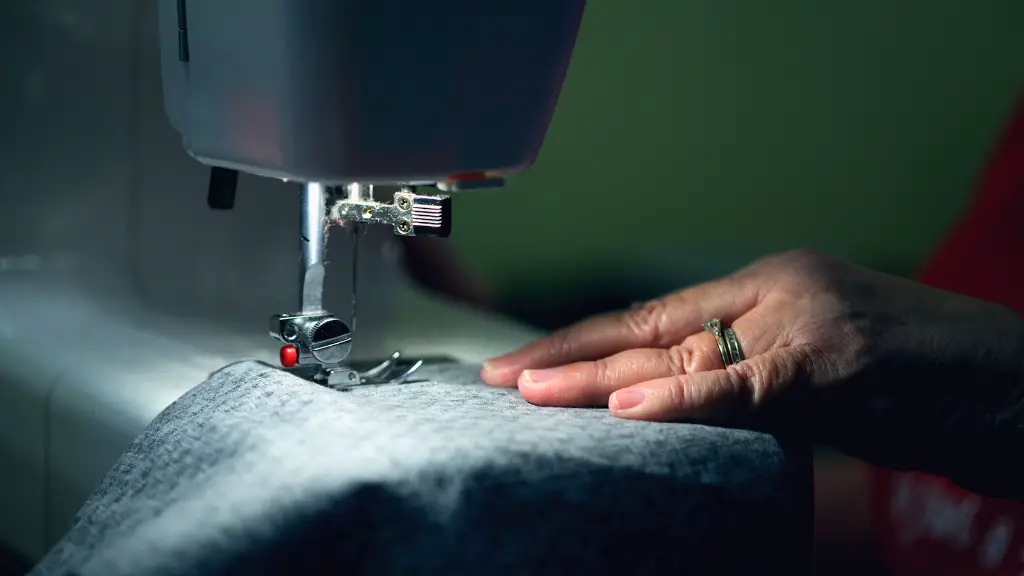Removing Outer Layer Of Dirt and Grime
Cleaning an old sewing machine can be very beneficial as it can improve its performance, extend its lifespan and make it look appealing. First and foremost, it is important to identify the material of the sewing machine and consider any special care instructions before beginning the cleaning process. Cleaning the machine should start with the outer layer of dirt and grime. Cleaning solutions, warm water and a soft cloth or sponge can be used for this purpose. It is also important to remove all pieces from the machine that can be removed and cleaned, such as bobbins, thread holders and foot controls.
Lubricant For Moving Parts and Thread Paths
Once the outer layer of dust is removed, the machine can be lubricated to ensure that the moving parts and thread paths are functioning properly. To lubricate the machine, a lubricant that is compatible with the machine should be used – possibly a 3-in-1 oil or sewing machine oil. The user should check the instruction manual for correct instructions on how to oil and lubricate the machine. It is important to pay attention to any bearings that move parts of the machine as it can cause damage if the lubrication has been neglected.
Thoroughly Cleaning the Bedplate And Bobbin Area
The next step for cleaning an old sewing machine is to thoroughly clean the bedplate and bobbin area. This area should be wiped down with a damp cloth or rag to remove any dirt and dust that have gathered in these areas. It is also important to regularly clean the machine’s bobbin and needle assembly, as this is an area that can become clogged with lint and dust. It is helpful to use a brush to clean the bobbin area, paying particular attention to the feed dog teeth, as these can sometimes be missed.
Degreasing The Machine
Once the outside of the machine is clean and the bobbin area is free of lint and dust, the machine should be degreased. This is done using a mild detergent and a cloth, paying close attention to the gears, the bobbin case, feed dog and tension disk. After this has been done, the parts should be wiped clean. This process is important for ensuring that the machine runs smoothly and does not create any unwanted noises.
Polishing The Machine
To polish an old sewing machine, a soft cloth can be used to dust it off and then an appropriate wax should be used to polish it. Liquid furniture polish, carnauba wax or a specialized wax for metal can be used to bring back the original luster of the machine. It is important to be careful not to use too much wax as this can build up on the metal and cause the machine to become sticky or sluggish. Many users recommend waxing the machine every six months to keep it running smoothly.
Checking the Machine
The last step of cleaning an old sewing machine is to check that all the parts are in working order. Care should be taken to check for any loose screws or broken parts, and if any are found, it is important to repair or replace them. It is also important to check that the machine is properly tensioned, as this is essential for sewing even stitches. Before using the machine, it is important to test it out by sewing a few samples to check that it is in working order.
Maintaining The Machine
Once the machine has been cleaned, the user should think about regular maintenance in order to ensure the machine continues to work properly. It is important to ensure that the machine is stored in a cool, dry place away from direct sunlight and moisture. Any dust or dirt should be regularly removed and the machine should be lubricated as needed. Regular vacuuming of the machine is also recommended to prevent dust and dirt from accumulating in the parts. Finally, routine cleaning can help to identify any problems with the machine, as well as to ensure that it runs smoothly.
Protecting The Machine
Another important aspect of cleaning an old sewing machine is to protect it from damage. This can be done by using covers for the machine when it is not in use to protect it from dust and dirt. Covers can also help to protect the machine from extreme temperatures and from sudden impacts, such as someone slamming a drawer shut while the machine is running. It is also important to ensure that anything sharp is kept away from the machine, as this can cause damage to the machine’s parts.
Cleansers and Solvents
When cleaning an old sewing machine, cleansers and solvents should be used carefully, as certain cleaners can be damaging to the machine if used incorrectly. It is important to use only cleaners and solvents that are suited to the material the machine is made from, as some cleaners may cause discoloration or damage. Grease-removing solutions should also be avoided, as these can damage the moving parts of the machine.
Problem Machines
If an old sewing machine is not cleaning properly or working how it should, it may need professional attention. This can be done by taking the machine to a sewing machine technician, who will be able to identify any problems with the machine and advise on any necessary repairs. It is better to take the machine to a qualified technician rather than try to repair it yourself as this can lead to further damage.


